It looks like you're using an Ad Blocker.
Please white-list or disable AboveTopSecret.com in your ad-blocking tool.
Thank you.
Some features of ATS will be disabled while you continue to use an ad-blocker.
share:
It's a general principle of archaeology that context of find is everything and yet when understanding the Nordic and Germanic cultural motif of the
Sonnerad and the Swastika this seems entirely overlooked and that includes the Thule society that re-introduced the symbol into the modern political
arena, because the context of their finding was as brooches found within the graves of women, i have never seen the reason for this questioned.
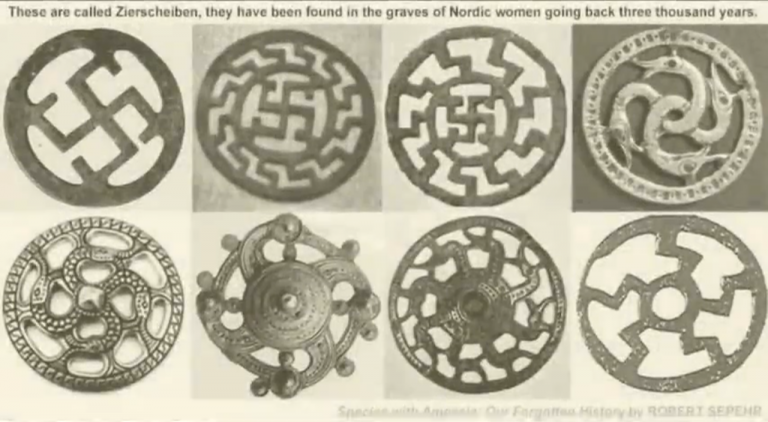
Despite this the idea that the motif is derivative of the rotation of Ursa Major around Celestial North has gained popular acceptance and as far as i'm aware i was the first to (re-)introduce this some years ago and it is increasingly understood the seven stars related to Seven Sages, but that doesn't explain why this was a motif of women.
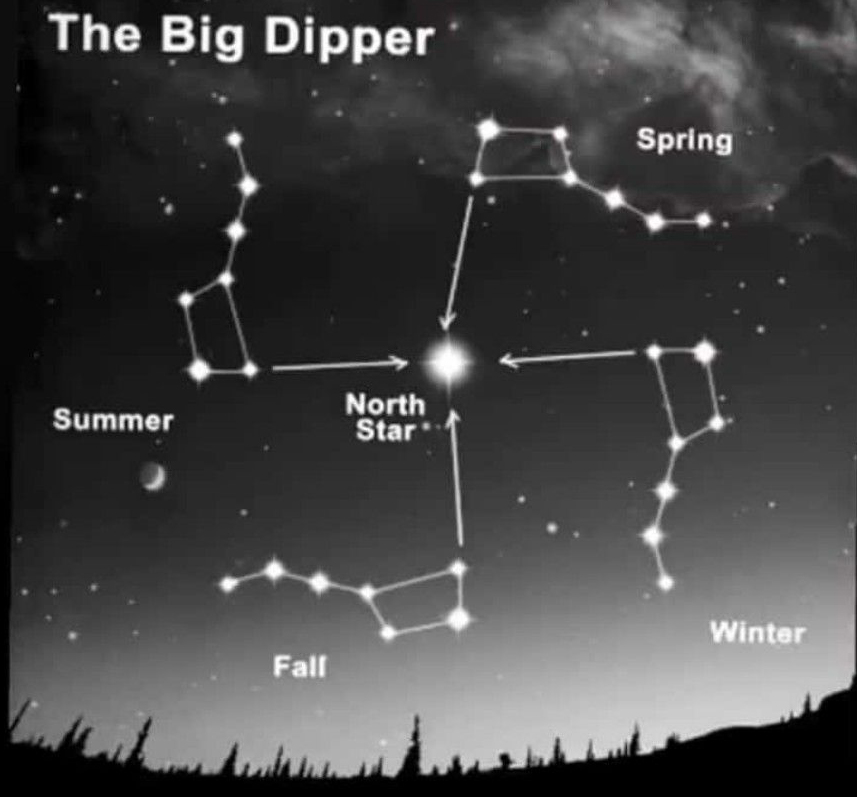
The earliest basis for an association of Ursa Major with a Goddess is the Babylonian Mul-Apin were the Constellation is associated with Nin-lil the consort of En-lil, who was associated with the constellation Bootes, Ursa-Major was taken as a chariot/wagon.
It was the case then that Ursa Major was the chariot of the Goddess Nin-lil and also Ursa Minor was the chariot of the Goddess Damkianna (another name for Ninhursag) the consort of En-ki and the Goddess of the sacred Mountain, these associations certainly pre-dating the Babylonian and dating back to the Neolithic period in Eurasian culture.

The Planetary association of En-lil and his consort Nin-lil was Saturn, we might find then similar associations with Cronus and his consort Rhea were she is understood to rule Celestial North, and indeed in Hymns to Rhea the chariot association can be seen.
The Chariot of Ursa Major related to the rotation of the Heavens around Celestial North on the daily basis and the yearly basis in terms of the seasons, this rotation was understood to drive the winds and the oceans and the greater cycle of life and death as related to the seasons and time itself.
The association then of the understood function of Ursa Major then as the driver of the seasons and time itself finds ready correlation with the concepts related to Saturn and the agricultural year, things get complicated when it's also obviously the case the Constellation could also be understood as a bear as related to the cult of Artemis, the great bear as in Ursa Major and the lesser bear Ursa Minor, and it's possible the Germanic and Scandanavian traditions related to this in terms of an equivalent of Artemis such as Skadi, who as a Goddess of Mountains that was the consort of the sea God seems more related to Damkianna as Ursa Minor, the myth of Callisto and Arcas relates more to hunting tradition rather than the agricultural and seems to require an Ante-Diluvian basis in the pre-agricultural.
The two variant traditions may reflect the changing of the Pole star over time, the usage of the Dragon in the Germanic motifs reflect that around 3,000 BC Thuban in Draco had become the Pole star, whereas Vega had become the Pole star North Star at about 11,500 BC and that may be the basis for the Artemis mythos, with Arcas reflecting Tau Herculis become the Pole star in 7400BC.
It's likely that the hunting tradition dating back to the Mesololithic period with Vega as Pole star and the tradition dating back to the introduction of agriculture and Draco as Pole star co-existed in the general Germanic mythos and seasonal rituals, but those based in agriculture would have had the emphasis on a Goddess of the Wagon/Chariot such as Nerthus, Nerthus like Skadi a consort of Njörðr the Vanir God and relating to the chariot of Ursa Minor and Damkianna/En-ki.
It was likely the case that the Vanir more celebrated the Wagon of Ursa Minor and the Aesir the Wagon of Ursa Major, many of the Germanic brooches are Alemannic and as these related to the Suebians the Goddess most likely related to their cultic association would be Nerthus, as well as among the seven peoples who worshiped the goddess Nerthus were the Angli (Angles)
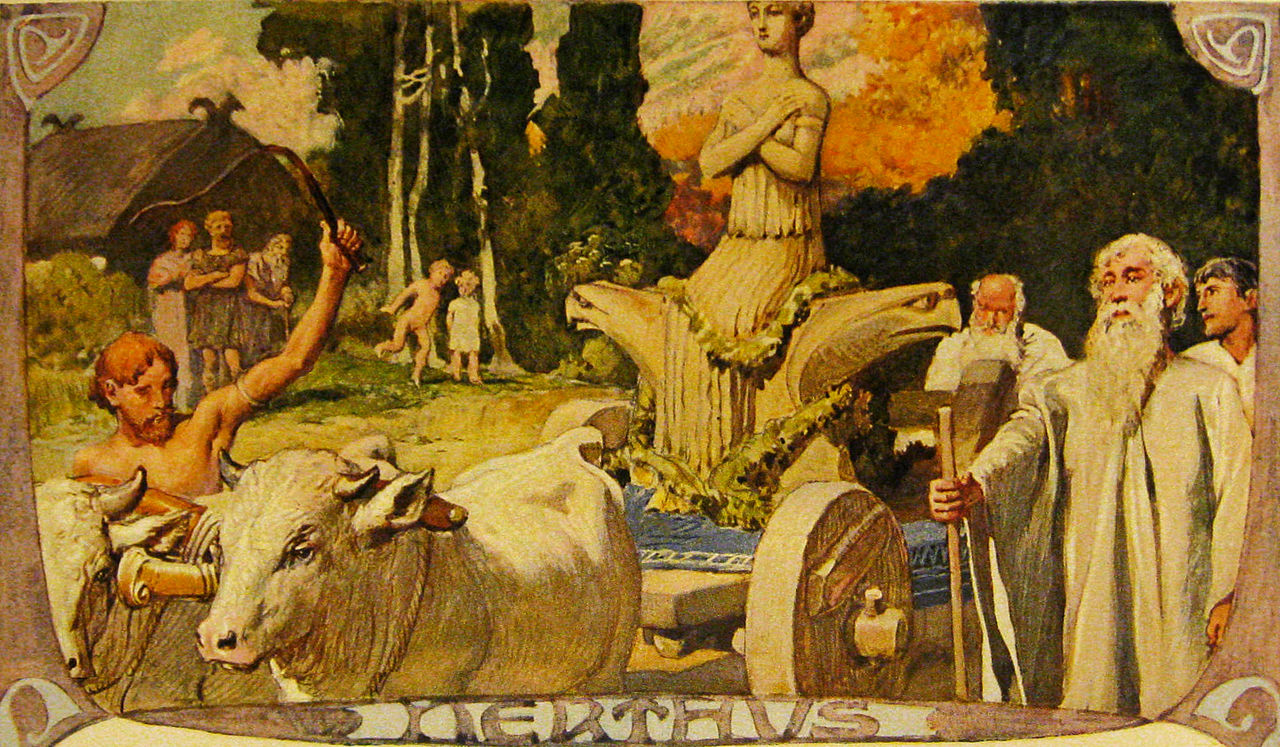

Despite this the idea that the motif is derivative of the rotation of Ursa Major around Celestial North has gained popular acceptance and as far as i'm aware i was the first to (re-)introduce this some years ago and it is increasingly understood the seven stars related to Seven Sages, but that doesn't explain why this was a motif of women.

The earliest basis for an association of Ursa Major with a Goddess is the Babylonian Mul-Apin were the Constellation is associated with Nin-lil the consort of En-lil, who was associated with the constellation Bootes, Ursa-Major was taken as a chariot/wagon.
The Wagon, Ninlil (The 7 principal stars of Ursa Major)
The star at the shaft of the Wagon, the Fox, Erra, the strong one among the gods (The star Zeta in Ursa Major)
The star at the front of the Wagon, the Ewe, Aya (Probably the star Epsilon in Ursa Major)
The Hitched Yoke, Anu, the great one of the heavens (the star Eta in Ursa Major)
The Wagon of Heaven, Damkianna (Ursa Minor)
The star on its rope, the Heir of the Sublime Temple, the first ranking son of Anu (The star Polaris in Ursa Minor)
It was the case then that Ursa Major was the chariot of the Goddess Nin-lil and also Ursa Minor was the chariot of the Goddess Damkianna (another name for Ninhursag) the consort of En-ki and the Goddess of the sacred Mountain, these associations certainly pre-dating the Babylonian and dating back to the Neolithic period in Eurasian culture.

The Planetary association of En-lil and his consort Nin-lil was Saturn, we might find then similar associations with Cronus and his consort Rhea were she is understood to rule Celestial North, and indeed in Hymns to Rhea the chariot association can be seen.
Daughter of great Protogonus, divine, illustrious Rhea, to my prayer incline, Who drives your holy car with speed along, drawn by fierce lions, terrible and strong. Mother of Zeus, whose mighty arm can wield the avenging bolt, and shake the dreadful shield. Drum-beating, frantic, of a splendid mien, brass-sounding, honored, Kronos’ blessed queen.
The Chariot of Ursa Major related to the rotation of the Heavens around Celestial North on the daily basis and the yearly basis in terms of the seasons, this rotation was understood to drive the winds and the oceans and the greater cycle of life and death as related to the seasons and time itself.
"Upon the Mother depend the winds, the ocean, the whole earth beneath the snowy seat of Olympus; whenever she leaves the mountains and climbs to the great vault of heaven, Zeus himself, the son of Cronus, makes way, and all the other immortal gods likewise make way for the dread goddess,"
The association then of the understood function of Ursa Major then as the driver of the seasons and time itself finds ready correlation with the concepts related to Saturn and the agricultural year, things get complicated when it's also obviously the case the Constellation could also be understood as a bear as related to the cult of Artemis, the great bear as in Ursa Major and the lesser bear Ursa Minor, and it's possible the Germanic and Scandanavian traditions related to this in terms of an equivalent of Artemis such as Skadi, who as a Goddess of Mountains that was the consort of the sea God seems more related to Damkianna as Ursa Minor, the myth of Callisto and Arcas relates more to hunting tradition rather than the agricultural and seems to require an Ante-Diluvian basis in the pre-agricultural.
In the chronology of myth Kallisto lived in the time before the Great Deluge which, some say, was brought on by her father King Lykaon who had served Zeus a meal of human flesh. After the catastrophe, Arkas claimed his throne and ruled a new generation of Pelasgian tribesmen born of the oaks. His descendants ruled the kingdom right down to the time of the Trojan War.
The two variant traditions may reflect the changing of the Pole star over time, the usage of the Dragon in the Germanic motifs reflect that around 3,000 BC Thuban in Draco had become the Pole star, whereas Vega had become the Pole star North Star at about 11,500 BC and that may be the basis for the Artemis mythos, with Arcas reflecting Tau Herculis become the Pole star in 7400BC.
It's likely that the hunting tradition dating back to the Mesololithic period with Vega as Pole star and the tradition dating back to the introduction of agriculture and Draco as Pole star co-existed in the general Germanic mythos and seasonal rituals, but those based in agriculture would have had the emphasis on a Goddess of the Wagon/Chariot such as Nerthus, Nerthus like Skadi a consort of Njörðr the Vanir God and relating to the chariot of Ursa Minor and Damkianna/En-ki.
Njörðr, father of the deities Freyr and Freyja by his unnamed sister, was in an ill-fated marriage with the goddess Skaði, lives in Nóatún and is associated with the sea, seafaring, wind, fishing, wealth, and crop fertility.
It was likely the case that the Vanir more celebrated the Wagon of Ursa Minor and the Aesir the Wagon of Ursa Major, many of the Germanic brooches are Alemannic and as these related to the Suebians the Goddess most likely related to their cultic association would be Nerthus, as well as among the seven peoples who worshiped the goddess Nerthus were the Angli (Angles)
Nerthus is often identified with the van Njörðr who is attested in various 13th century Old Norse works and in numerous Scandinavian place names.
In Germania, Tacitus records that the remote Suebi tribes were united by their veneration of the goddess at his time of writing and maintained a sacred grove on an (unspecified) island and that a holy cart rests there draped with cloth, which only a priest may touch. The priests feel her presence by the cart, and, with deep reverence, attend her cart, which is drawn by heifers. Everywhere the goddess then deigns to visit, she is met with celebration, hospitality, and peace. All iron objects are locked away, and no one will leave for war. When the goddess has had her fill she is returned to her temple by the priests. Tacitus adds that the goddess, the cart, and the cloth are then washed by slaves in a secluded lake. The slaves are then drowned.

If the sun shines at day, what could be the black sun then in the night. The moon is also is connected to female energy, creational as you may know
many old wisdoms about seeding and harvest or pulling clones during moon phases.
To cite and translate a very old Germanic scripture, trying my best from the top of my head:
##
You can't look at the sun during the day and everything else is visible but you can look at the moon in the night without hurt and not see in the darkness. Both the white and the black sun cause the observer in their respective light to be blinded.
##
If you do not look at the moon in a moonlit night you can see better as well. It could have been hunter's wisdom I read, I am not claiming anything mystic.
To cite and translate a very old Germanic scripture, trying my best from the top of my head:
##
You can't look at the sun during the day and everything else is visible but you can look at the moon in the night without hurt and not see in the darkness. Both the white and the black sun cause the observer in their respective light to be blinded.
##
If you do not look at the moon in a moonlit night you can see better as well. It could have been hunter's wisdom I read, I am not claiming anything mystic.
a reply to: TDDAgain
The Son of the Sun as Saturn ruled by night in the absence of the Northern Sun, as related to Mithra that may have an extended meaning in terms of a guardian of the ages in the absence of the original light, a torch-bearer
Saturn as the Son of Night
This aspect of Saturn confused many but the origins were Mesopotamian in terms of Sig-sig and Isum and Hendursanga , these are the watchmen of the night, the light in the darkness, herald of the (silent) night
Herald of the Silent Night
It is Nin-lil as the Feminine aspect of Saturn that generates this light in the darkness, the torchbearer.
The Son of the Sun as Saturn ruled by night in the absence of the Northern Sun, as related to Mithra that may have an extended meaning in terms of a guardian of the ages in the absence of the original light, a torch-bearer
A possible mythological dimension to Saturn’s role as a “counter-sun” is furnished by the Greek myth of Phaethon, the son of Helios, who nearly destroyed the world with fire when he caused the solar chariot to crash down from the sky into the river Eridanus. Various passages indicate that Phaethon – or his soul – was eventually placed in the sky as a planet or asterism, but the sources disagree on the identity of Phaethon’s “star”. Hyginus credited Eratosthenes with the identification of Phaethon as the planet Saturn: The second star is that of Sol; others say of Saturn. Eratosthenes claims that it is called Phaethon, from the son of Sol. Many have written about him how he foolishly drove his father’s chariot and set fire to the earth. Because of this he was struck with a thunderbolt by Jove, and fell into the river Eridanus, and was conveyed by Sol to the constellations.
“… for they [the inhabitants of the southern part of Greater Asia, from India to Mesopotamia; MAS] revere the star of Venus under the name of Isis, and that of Saturn as Mithras Helios.”
Hyginus, Poetical Astronomy 2.42.2, tr. Grant 1960: 228: “The second star is that of Sol; others say of Saturn. Eratosthenes claims that it is called Phaethon, from the son of Sol.”
Macrobius, Saturnalia 1.22.8, tr. Davies 1969: 148: “And Saturn himself, the author of times and seasons (and therefore, by the change of a letter, called Κρόνος by the Greeks as though for χρόνος, time), must assuredly be understood to be the sun …”
be thou Cronos, or Phaëthon of many names, or Mithras the Sun of Babylon, in Hellas Delphic Apollo; be thou Gamos …, … painquelling Paieon, or patterned Heaven; be thou called the Starclad …”
Saturn as the Son of Night
This aspect of Saturn confused many but the origins were Mesopotamian in terms of Sig-sig and Isum and Hendursanga , these are the watchmen of the night, the light in the darkness, herald of the (silent) night
Herald of the Silent Night
Utu, the great lord of Arali, After he turns the dark place into light he will judge your case. Let the child of the sun-god Utu, *light up for him the netherworld, the place of darkness!
What Ninlil did, having given birth to Išum, was to set him alight. The two lines are to be translated, “Ninlil bore Išum for Šamaš, then set (him alight) and left him in the street.”
It is Nin-lil as the Feminine aspect of Saturn that generates this light in the darkness, the torchbearer.
This is clearly implied in Tacitus’ statement that “of the seven planets that rule the fortunes of
mankind,Saturn moves in the highest orbit and has the greatest potency.
Manetho stated that the Titan Kronos “rules the whole aether” (pantòs … aithéros árchei) Some Neo-Platonists went so far as to associate the planet with the pole as the motive agent of the cosmos; for example, expounding on Saturn’s association with a sickle and Plato’s comparison of the cosmos to a spindle whorl, Proclus noted that the pole as the ágkistron or “hook” of the spindle was regarded as the sign of Saturn, “imitating the Mind” of the cosmos. In other contexts, the term pólos does not refer to the rotational pole but to the entire starry heaven, in its turning aspect. The latter usage of the term may underlie the adjective hypsípolos, used by Porphyry and Nonnus to describe Saturn, for which the translation “high in the (starry) sky” seems valid.Meanwhile, others interpreted the elevated position of Saturn’s sphere, adjoining that of the fixed stars, not as a sign of the god’s loftiness, but of his exile to the boundary of the cosmos – with a nod to the myth of Kronos’ banishment. Thus, Cicero explicitly stated that Jupiter had chained his father Saturn to the stars. A related concept was the late understanding, reported by Diodorus of Tarsus (d. c. 390 AD), that Saturn was actually the largest of the planets, only appearing to be small because it is further away than all the others.
So the Saturnians are really the culprit of our time , I always had the feeling they didn't like us at al ...
I always had a big interest about Saturn never read this from this point of view ,it clearly shows signs that reflect our current situation..
Knowing some observing facts makes the puzzle somehow easier to understand.
edit on 0b24America/ChicagoThu, 24 Mar 2022 14:00:24
-0500vAmerica/ChicagoThu, 24 Mar 2022 14:00:24 -05001 by 0bserver1 because: (no reason given)
a reply to: 0bserver1
Given Celestial North was ruled by the principle of Saturn it is easy to understand that when the Sun is Northern at the Midnight hour it will correlate to the same influence, cyclic change, death and rebirth, but that is just the basis of natural order, Saturn as an evil influence is only in subverting, changing, destroying that which is good and shouldn't be changed for the worse, to change things for the better is obviously good, the overall principle is neutral.
The star that had the most destructuve influence of Ursa Major was Erra likely from the Hattic Iyarri an early basis for Apollo as Ai-pol the true heir of En-lil, the seven stars originally his hunting party, again this is relative to what he is fighting against and destroying whether good or evil.

Greek Magical Papyrii

a reply to: Terpene
The Divine principle will pre-date any particular star or planet and it's likely a pre-existing system of meta-physical knowledge was applied and adapted as a template for the basis of esoteric sky-lore in Eurasian tradition
Given Celestial North was ruled by the principle of Saturn it is easy to understand that when the Sun is Northern at the Midnight hour it will correlate to the same influence, cyclic change, death and rebirth, but that is just the basis of natural order, Saturn as an evil influence is only in subverting, changing, destroying that which is good and shouldn't be changed for the worse, to change things for the better is obviously good, the overall principle is neutral.
The star that had the most destructuve influence of Ursa Major was Erra likely from the Hattic Iyarri an early basis for Apollo as Ai-pol the true heir of En-lil, the seven stars originally his hunting party, again this is relative to what he is fighting against and destroying whether good or evil.

Greek Magical Papyrii

a reply to: Terpene
The Divine principle will pre-date any particular star or planet and it's likely a pre-existing system of meta-physical knowledge was applied and adapted as a template for the basis of esoteric sky-lore in Eurasian tradition
edit on 24-3-2022 by Madrusa because: (no reason given)
a reply to: Madrusa
Very interesting, it seems that number seven is
a very mystical number, it reflects a lot of seemingly good things from history as and Theological point of view.
I've seen seven spheres exactly placed over the big dipper in the night.
Came here in 2007 had some weird experiences with Saturn, really some crazy stuff.
Whenever I see someone posting something about Saturn I want to learn lol
Thanks for this thread a real eye-opener
Very interesting, it seems that number seven is
a very mystical number, it reflects a lot of seemingly good things from history as and Theological point of view.
I've seen seven spheres exactly placed over the big dipper in the night.
Came here in 2007 had some weird experiences with Saturn, really some crazy stuff.
Whenever I see someone posting something about Saturn I want to learn lol
Thanks for this thread a real eye-opener
edit on 0b45America/ChicagoThu, 24 Mar 2022 15:40:45 -0500vAmerica/ChicagoThu, 24 Mar 2022 15:40:45 -05001 by 0bserver1 because: (no reason
given)
a reply to: 0bserver1
The Heptad is most deeply rooted in Anatolian tradition were they likely had four correlating to the Four quarters of the Moon and ascribed to four constellations of the Heavens, seven sages of Aquarius and Winter origins, seven maidens of the Pleiades and Spring, seven hunters of Ursa Major and Summer, and seven destructive Demons of Scorpio and Autumn.
The Heptad in Anatolia
it's also generally overlooked that the planetary Gods had Feminine counter parts which were the most deep rooted aspect of the principles involved albeit less dynamic, in the case of Saturn/Nin-lil rule over Celestial North and the space-time continuum no small matter, this the likely cause of your strange experiances.
The Heptad is most deeply rooted in Anatolian tradition were they likely had four correlating to the Four quarters of the Moon and ascribed to four constellations of the Heavens, seven sages of Aquarius and Winter origins, seven maidens of the Pleiades and Spring, seven hunters of Ursa Major and Summer, and seven destructive Demons of Scorpio and Autumn.
The Heptad in Anatolia
it's also generally overlooked that the planetary Gods had Feminine counter parts which were the most deep rooted aspect of the principles involved albeit less dynamic, in the case of Saturn/Nin-lil rule over Celestial North and the space-time continuum no small matter, this the likely cause of your strange experiances.
a reply to: Madrusa
Cool! There is so many directions to go with this, Black Sun circles are like that I suppose.
Also lightening bolts and the Sig rune, more commonly known as Sowilo, the Sun. These symbols go right back to proto Indo-European culture in Anatolia and beyond.
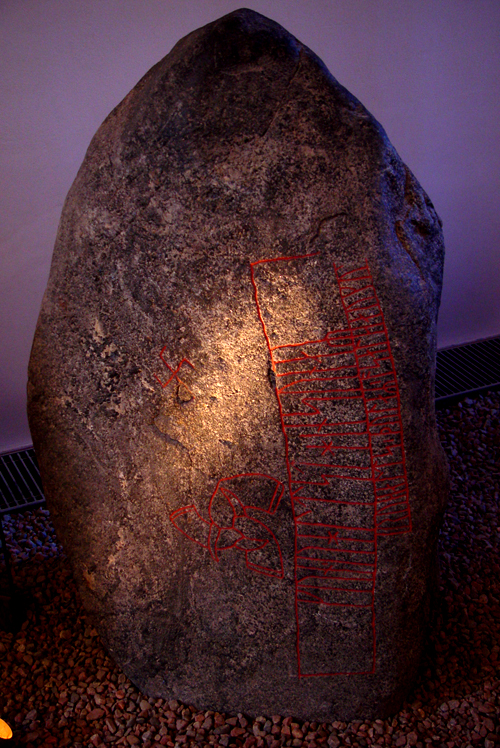
Some speculative research follows the anomalous Giant ginger ruling class of Egypt and Mesopotamia back to the Southern Caucuses via the occurrence of the swastika on the Samarra bowl, Uruk period, 4000 BC.
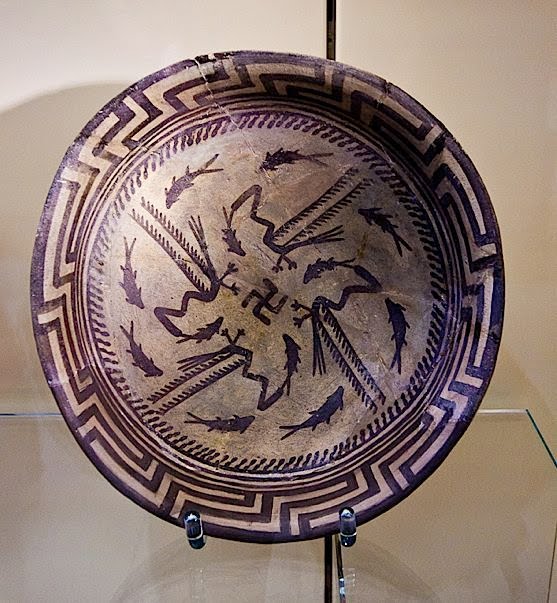
www.eupedia.com...
Now the fall of the Giants was at Troy in Anatolia, this is the line of King Arkas, son of Zeus and Callisto, mentioned in the OP. Yngvi/Freyr and Gerda led the Ynglings out of Anatolia into Sweden and then later into Norway.
Laufey/Nal seems pretty good as a later Norse version of Ninlil, she is the needle, the nowl at the center of the universe.
And that's where Ninlil gets all holographic, the center being somewhere and everywhere, nonlocal reality in quantum physics terms.
The Nonlocal Universe
As macrocosmic somewhere center, the world pillar fractals out with the seven stars of Ursa Major and the swastika, again representing the whole. I really like the Mithras Liturgy you quoted before from the Greek Magical Papyrii, the ascent through the seven planets as the Seven Gods and Goddesses of those same stars.
The seven vowels are used in the incantations, the cosmic lyre and the music of the spheres... beautiful.
Mystery of the Seven Vowels
Yet moreso than God, the heart of the center brings to mind the Goddess, the Celestial omphalos, Parabindu- the ultimate singular point with creation rotating about her.
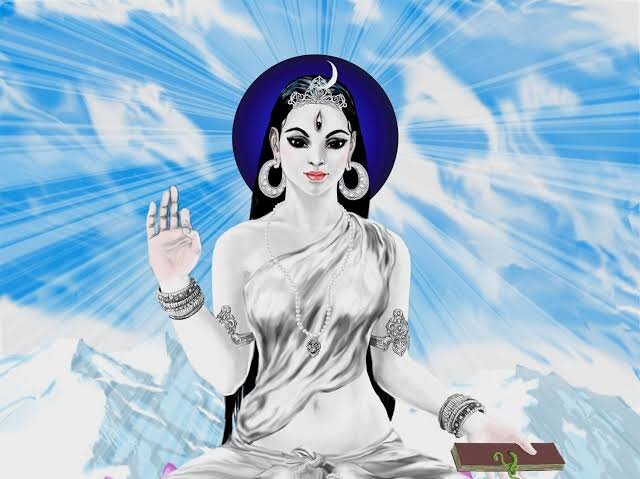
Cool! There is so many directions to go with this, Black Sun circles are like that I suppose.
As it was used by the Germanic peoples, the swastika was so closely tied to two other symbols, the sunwheel and Thor’s hammer, that the three were practically interchangeable.
Also lightening bolts and the Sig rune, more commonly known as Sowilo, the Sun. These symbols go right back to proto Indo-European culture in Anatolia and beyond.

Some speculative research follows the anomalous Giant ginger ruling class of Egypt and Mesopotamia back to the Southern Caucuses via the occurrence of the swastika on the Samarra bowl, Uruk period, 4000 BC.

www.eupedia.com...
Now the fall of the Giants was at Troy in Anatolia, this is the line of King Arkas, son of Zeus and Callisto, mentioned in the OP. Yngvi/Freyr and Gerda led the Ynglings out of Anatolia into Sweden and then later into Norway.
It should be noted that Snorri Sturluson (1179-1241), the Icelandic writer, who wrote the Prose Edda, made an interesting comparison with the Aesir gods to the people in Asia, particular to the Trojan royal family. Snorri wrote that the Aesir had come from Asia, and he compared the Ragnarok with the Fall of Troy, so Snorri is saying that Asgard, home of the gods, was also called Troy. Several of the gods were identified with the heroes. Snorri wrote that Thor was once called Hector, Ali (Vali) was Helenus, and Vidar with Aeneas. While Loki was compared to the devious trickster Ulysses (Odysseus).
Laufey/Nal seems pretty good as a later Norse version of Ninlil, she is the needle, the nowl at the center of the universe.
berloga-workshop.com...
Under the names of Nal and Bergelmir, Laufey and Farbauti appear as the primordial couple in the Norse version of the universal flood myth. The flood, caused by the blood of the murdered androgynous giant Ymir, covers the whole world, and destroys all the early giants; except for Nal and Bergelmir. They escaped to safety in Jotunheim by sheltering on one of the beams of the World Mill.
And that's where Ninlil gets all holographic, the center being somewhere and everywhere, nonlocal reality in quantum physics terms.
The Nonlocal Universe
As macrocosmic somewhere center, the world pillar fractals out with the seven stars of Ursa Major and the swastika, again representing the whole. I really like the Mithras Liturgy you quoted before from the Greek Magical Papyrii, the ascent through the seven planets as the Seven Gods and Goddesses of those same stars.
Now the course of the visible gods will appear through the disk of god, my father; and in similar fashion the so-called “pipe”, the origin of the ministering wind. For you will see it hanging from the sun's disk like a pipe. You will see the outflow of this object toward the regions westward.
The seven vowels are used in the incantations, the cosmic lyre and the music of the spheres... beautiful.
The seven vowels celebrate me, the great imperishable God, indefatigable Father of All. I am the imperishable lyre, having tuned the lyric songs of the celestial vortex.
Mystery of the Seven Vowels
Yet moreso than God, the heart of the center brings to mind the Goddess, the Celestial omphalos, Parabindu- the ultimate singular point with creation rotating about her.
Just as a massive tree exists as potential energy in the tiny seed of the banyan fig, so does this world consisting of animate and inanimate things exist in the Heart-Seed

edit on 25-3-2022 by primalfractal because: (no reason given)
a reply to: primalfractal
There's a glaring issue with Germanic/Nordic mythology in that nobody knows who their equivalent of Saturn was, in theory the Head of the Aesir Pantheon Odin should correlate to En-lil as the All-Father, and yet the cult relates to Divine Possession were Odin as the supreme individualist is correlated to Mercury, something then of a cult of Saturn incarnate were Odin takes Freya as wife.
The reconstruction for the Vanir is easy, Njord-Skadi-Frey-Freya correlating to Enki-Ninhursag-Asar-Nazi, not only then does Odin incarnate but takes the daughter of Njord as bride. Generally Nin-lil as the original consort of Saturn had been syncretized with the love Goddess.
There was then creeping syncretism were Nazi/Nanse of Nina becomes Istar of Ninevah becomes Nin-lil of Ursa Major, but the strange thing is that Nanse had always been seen as commanding the seven stars of Ursa Major, though her strongest identification was with the seven fish sages of Aquarius the principle could be seen to carry through the four quarters of the Heavens, this was through her steward Hendursaja who has the role of night-watchman/Black Sun, she pinned the swastika on his chest and sent him off for a torchlit parade.
It is Hendursaja that correlates to Sig-sig as the Son of the Sun, the ruling principle of Saturn, it is also considered Hendursaja related to Vishnu and his brother Nindara to Indra, that would be the origins of a Deity relating to Saturn becoming incarnate as Vishnu.
An Indo-European God in a Gudea inscription
It is interesting that Nin-lil was also associated with the constellation Lyra as that would correlate to when Vega was the Pole star, the associations of the Artemis mythos likely originated with an aspect of Nin-lil.

The association with Artemis has to be along the same lines as Apollo deriving from Iyarri/Erra as a star of Ursa Major or Ursa Minor in the case of Polaris, the Feminine counterpart Inara, the potnia theron/Mistress of Beasts as the Goddess of empathic nature counterpart to the God of the Hunt, the cult of the Lyre then relating to this charming of the beasts, it could also be said that Inara was to the hunting mythos what Nanse was to the agricultural/civilized in her caring capacity, a country cousin.
There's a glaring issue with Germanic/Nordic mythology in that nobody knows who their equivalent of Saturn was, in theory the Head of the Aesir Pantheon Odin should correlate to En-lil as the All-Father, and yet the cult relates to Divine Possession were Odin as the supreme individualist is correlated to Mercury, something then of a cult of Saturn incarnate were Odin takes Freya as wife.
The reconstruction for the Vanir is easy, Njord-Skadi-Frey-Freya correlating to Enki-Ninhursag-Asar-Nazi, not only then does Odin incarnate but takes the daughter of Njord as bride. Generally Nin-lil as the original consort of Saturn had been syncretized with the love Goddess.
In Herodotus' Histories, Ninlil under the name Mylitta was identified as the Assyrian version of Aphrodite, the Greek goddess of love. It is possible that this identification was due to Ninlil's syncretism with Ištar as the goddess of love and war.
Very little is known about the iconography of Ninlil/Mulliltu. Some of her later iconography may overlap with that of the goddess Ištar after they were syncretised. Astronomically she is identified with the constellations Ursa Maior (mulmar-gíd-da ereqqu "wagon") and Lyra (mulUZ3 enzu "goat").
There was then creeping syncretism were Nazi/Nanse of Nina becomes Istar of Ninevah becomes Nin-lil of Ursa Major, but the strange thing is that Nanse had always been seen as commanding the seven stars of Ursa Major, though her strongest identification was with the seven fish sages of Aquarius the principle could be seen to carry through the four quarters of the Heavens, this was through her steward Hendursaja who has the role of night-watchman/Black Sun, she pinned the swastika on his chest and sent him off for a torchlit parade.
O king of all inhabited lands, creator of the world, O Hendursaja , first born of Enlil holder of the sublime scepter
Nance has placed a mighty symbol in your hand, Hendursaja. The divine mother Nance speaks confidentially with you. She has made the crook and sceptre for its plans flourish in a pure place
You are the chief constable of the dead people who are brought to the underworld. Chief herald, lord Hendursaja: after Enki had had intercourse with ..., he destined the seven sons that she had borne to him...The seven heralds stand at your service, on this very day, as evening approaches, the first of the seven is a fox with a sweeping tail.
It is Hendursaja that correlates to Sig-sig as the Son of the Sun, the ruling principle of Saturn, it is also considered Hendursaja related to Vishnu and his brother Nindara to Indra, that would be the origins of a Deity relating to Saturn becoming incarnate as Vishnu.
An Indo-European God in a Gudea inscription
It is interesting that Nin-lil was also associated with the constellation Lyra as that would correlate to when Vega was the Pole star, the associations of the Artemis mythos likely originated with an aspect of Nin-lil.
Mullil and Mulliltu can also be analysed as words derived from the Akkadian verb "to be pure"

The association with Artemis has to be along the same lines as Apollo deriving from Iyarri/Erra as a star of Ursa Major or Ursa Minor in the case of Polaris, the Feminine counterpart Inara, the potnia theron/Mistress of Beasts as the Goddess of empathic nature counterpart to the God of the Hunt, the cult of the Lyre then relating to this charming of the beasts, it could also be said that Inara was to the hunting mythos what Nanse was to the agricultural/civilized in her caring capacity, a country cousin.
edit on 25-3-2022 by Madrusa because: (no reason given)
a reply to: Madrusa
Hi Madrusa,
In the 20th Century and the Nazi Party did give the swastika a bad name that it didn't have before, to us after 1945, it seems strange that a Canadian Hockey Team would use it as an emblem, link below:-
en.wikipedia.org...
There wasn't a problem with the Swasitka before the early 30's. There is a town called Swastika in Canada that is dated to 6th January 1908, when a gold mine was staked, and made legal, on that day using modern midnight day marker we find Sirius culminating, you never know, Sirius might give good fortune, i could be wrong about the stars, LOL!
en.wikipedia.org...
Astronomy graph showing Sirius culminating on download below:-
files.abovetopsecret.com...
This next date doesn't happen every year where modern midnight day marker was used for the start of the German Workers Party on 5th January 1919, where Jupiter and Sirius culminating at Due South although Jupiter is slightly out of one degree, but this doesn't happen again until 2002, as the orbit of Jupiter around the Sun takes 11.86 years.
en.wikipedia.org...
Graph below:-
files.abovetopsecret.com...
Hi Madrusa,
In the 20th Century and the Nazi Party did give the swastika a bad name that it didn't have before, to us after 1945, it seems strange that a Canadian Hockey Team would use it as an emblem, link below:-
en.wikipedia.org...
There wasn't a problem with the Swasitka before the early 30's. There is a town called Swastika in Canada that is dated to 6th January 1908, when a gold mine was staked, and made legal, on that day using modern midnight day marker we find Sirius culminating, you never know, Sirius might give good fortune, i could be wrong about the stars, LOL!
en.wikipedia.org...
Astronomy graph showing Sirius culminating on download below:-
files.abovetopsecret.com...
This next date doesn't happen every year where modern midnight day marker was used for the start of the German Workers Party on 5th January 1919, where Jupiter and Sirius culminating at Due South although Jupiter is slightly out of one degree, but this doesn't happen again until 2002, as the orbit of Jupiter around the Sun takes 11.86 years.
en.wikipedia.org...
Graph below:-
files.abovetopsecret.com...
a reply to: Madrusa
Yes Odin is definately a strange one, seems a bit lacking in altruism to be a decent all-father. Guess if Norse roots were in Anatolia they were much changed, had become patrilineal and possibly more warlike. The two groups of Gods, Vanir and Aesir, suggest some sort of outside colonisation. There is some evidence Tyr was previously head of the Norse Gods, going back to proto Indo-European Dyeus.

The Artemis statue below found at Troy, certainly there is an association between Artemis and the swastika. Artemis was a moon goddess, also “Mylitta, the mother or the bees goddess”, the moon considered a bull, so bees and bulls were also linked.
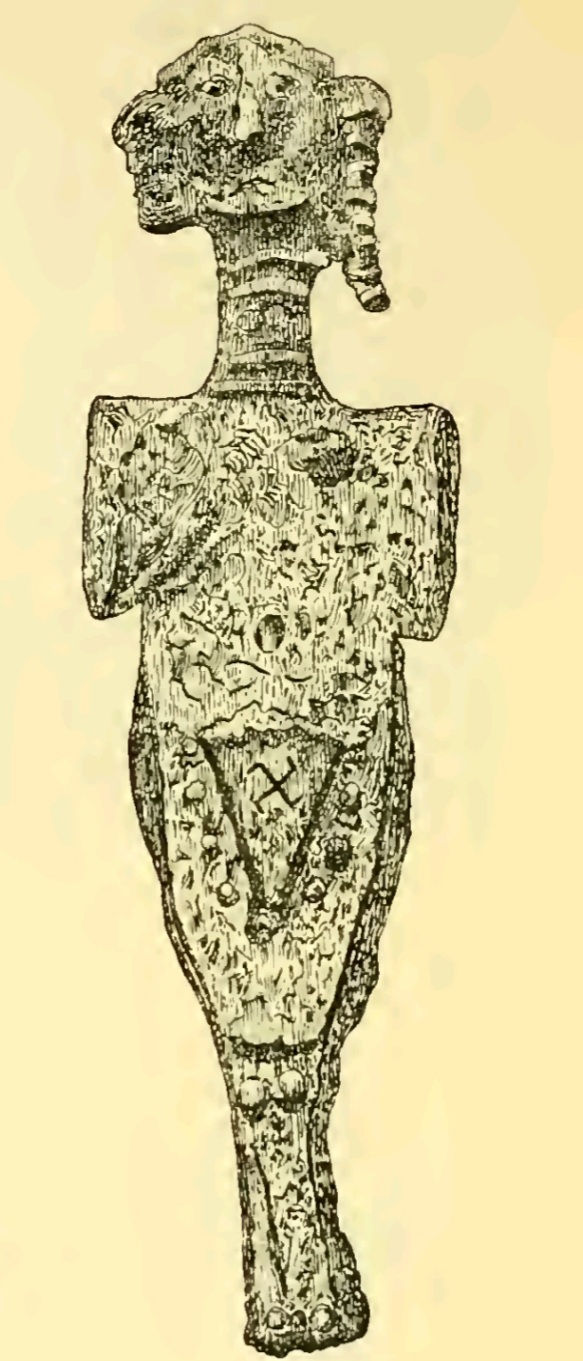

Learned about the Knielauf position, which rather than being something from the kama sutra, or an odd predecessor to the heimlich maneuver, is swastika pose.
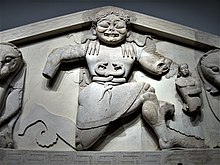
Yes Odin is definately a strange one, seems a bit lacking in altruism to be a decent all-father. Guess if Norse roots were in Anatolia they were much changed, had become patrilineal and possibly more warlike. The two groups of Gods, Vanir and Aesir, suggest some sort of outside colonisation. There is some evidence Tyr was previously head of the Norse Gods, going back to proto Indo-European Dyeus.
www.ancientworldmagazine.com...
Julius Caesar (100-44 BC) also wrote about the gods that were worshipped by Germanic tribes in his De Bello Gallico. Foremost among them, according to Caesar, was the deity that he equated with Mercury and whom modern scholars assume may have been an early form of Wotan (whom the Norse would call Odin)

When the Ephesian Artemis appears in her stiff Anatolian format, bees are often shown on her belt or tight skirt. Indeed, D.G. Hogarth, who excavated the earliest levels of the sanctuary found gold ornaments, some in the shape of bees, that could have been attached to an image's garments. Some scholars trace the Ephesian Artemis back to an earlier Anatolian goddess whom the Hittites called Hannahanna, who sent a bee to wake up the god Telepinu from sleep/death
The Artemis statue below found at Troy, certainly there is an association between Artemis and the swastika. Artemis was a moon goddess, also “Mylitta, the mother or the bees goddess”, the moon considered a bull, so bees and bulls were also linked.
From Porphyry's writings, scholars have also learned that Melissa was the name of the moon goddess Artemis and the goddess who took suffering away from mothers giving birth. Souls were symbolized by bees and it was Melissa who drew souls down to be born. She was connected with the idea of a periodic regeneration.


Learned about the Knielauf position, which rather than being something from the kama sutra, or an odd predecessor to the heimlich maneuver, is swastika pose.
The Medusa is wearing a short skirt which allows her legs freedom of movement while she is fleeing from Perseus. Her motion is further indicated by the formulaic positioning of her legs in the so–called Knielauf position which stylistically resembles a swastika.

edit on 26-3-2022 by primalfractal because: (no reason given)
a reply to: TDDAgain
"If the sun shines at day, what could be the black sun then in the night."
Saturn springs to mind down to Babylonian cuneiform texts and also in Graeco-Roman writings.
That being said nether Saturn nor even Jupiter have anywhere near the sort of mass required to become a star.
"If the sun shines at day, what could be the black sun then in the night."
Saturn springs to mind down to Babylonian cuneiform texts and also in Graeco-Roman writings.
That being said nether Saturn nor even Jupiter have anywhere near the sort of mass required to become a star.
a reply to: primalfractal
This is why it was problematic when the Wotanists tried to replace the Christian Uranian Heavenly Father with an archetype that would more closely correspond to El-ohim, were El was the equivalent of En-lil, and were the Yahwists had merged that with the cult of Ba'al/Jupiter, the principle we more naturally accept as representing good order, one couldn't simply replace Jehovah and the concepts bound up with that with Wotan, though they did and came up with a Germanic form of early Judaism.
Odin as High God and All-Father is in the same sense as En-lil, generative spirit and phenomena, ruling principle of Saturn and Celestial North, his association with Mercury is in the sense that he was understood as very actively engaged within the world and that could manifest in terms of possesion and individuation.
It is the essential cyclical function of Ursa Major that made it the symbol of Goddesses of generative nature and the Moon had the same association transition through four quarters, they are much more concerned with birth-life-death, but it is interesting that the primary Goddess of the spiritual side of the Pantheon is represented by Ursa Major and Nin-lil, and the primary Goddess of the existential side of the Pantheon is represented by Ninhursag and Ursa Minor, the latter would more closely relate to seven actual heroes from the mythology, but then you would have to match these up with the seven spiritual qualities or auras as related to En-lil.
a reply to: AstroStar
That was the influence of Thule and the Wotanists, they were greatly influenced by Theosophy and Free-Masonry and their understanding of mythology was limited and distorted by notions such as Atlantis and the Quest for the Holy Grail, so they used the symbol in an inappropriate context, though it was an important Germanic symbol, this ultimately led to their cyclic destruction over a 12 year period (1933-1945) which as you mention would relate to Jupiters orbital periodic, so it's important to use symbols wisely, there is Hitler's little poem regarding Wotan.
This is why it was problematic when the Wotanists tried to replace the Christian Uranian Heavenly Father with an archetype that would more closely correspond to El-ohim, were El was the equivalent of En-lil, and were the Yahwists had merged that with the cult of Ba'al/Jupiter, the principle we more naturally accept as representing good order, one couldn't simply replace Jehovah and the concepts bound up with that with Wotan, though they did and came up with a Germanic form of early Judaism.
Odin as High God and All-Father is in the same sense as En-lil, generative spirit and phenomena, ruling principle of Saturn and Celestial North, his association with Mercury is in the sense that he was understood as very actively engaged within the world and that could manifest in terms of possesion and individuation.
Snorri mentions the high seat on four occasions. In the first instance he seems to refer to it rather as a dwelling place: "There is one abode called Hliðskjálf, and when Allfather sat in the high seat there, he looked out over the whole world and saw every man's acts, and knew all things which he saw."
However, later he explicitly refers to it as the high seat itself: "Another great abode is there, which is named Valaskjálf.
He gave them twelve rǫkstólar (judgement-seats), but the high-seat was his alone
It is the essential cyclical function of Ursa Major that made it the symbol of Goddesses of generative nature and the Moon had the same association transition through four quarters, they are much more concerned with birth-life-death, but it is interesting that the primary Goddess of the spiritual side of the Pantheon is represented by Ursa Major and Nin-lil, and the primary Goddess of the existential side of the Pantheon is represented by Ninhursag and Ursa Minor, the latter would more closely relate to seven actual heroes from the mythology, but then you would have to match these up with the seven spiritual qualities or auras as related to En-lil.
a reply to: AstroStar
That was the influence of Thule and the Wotanists, they were greatly influenced by Theosophy and Free-Masonry and their understanding of mythology was limited and distorted by notions such as Atlantis and the Quest for the Holy Grail, so they used the symbol in an inappropriate context, though it was an important Germanic symbol, this ultimately led to their cyclic destruction over a 12 year period (1933-1945) which as you mention would relate to Jupiters orbital periodic, so it's important to use symbols wisely, there is Hitler's little poem regarding Wotan.
I often go on bitter nights
To Wotan’s oak in the quiet glade
With dark powers to weave a union—
The runic letters the moon makes with its magic spell
And all who are full of impudence during the day
Are made small by the magic formula!
edit on 26-3-2022 by Madrusa because: (no reason given)
a reply to: Madrusa
Hi Madrusa,
As Saturn is also a topic, i find Voltaire interesting with Micromegas:-
en.wikipedia.org...
Hi Madrusa,
As Saturn is also a topic, i find Voltaire interesting with Micromegas:-
en.wikipedia.org...
a reply to: AstroStar
Voltaire was a notorious Saturnine satirist, i would assume that is a parody of Saturnine cultists and their assumed lofty and cynical position above the normative compared with the Sirius cultist that consider they have the higher perspective and more extensive knowledge, the Satanic is a minor aspect of Saturn given it's association with subverting innocence and corruption in general, obviously the negative aspect, and Jesus was understood as rejecting the lofty perspective of Saturn in terms of the negative associations, but there is also the positive aspect.
Voltaire was a notorious Saturnine satirist, i would assume that is a parody of Saturnine cultists and their assumed lofty and cynical position above the normative compared with the Sirius cultist that consider they have the higher perspective and more extensive knowledge, the Satanic is a minor aspect of Saturn given it's association with subverting innocence and corruption in general, obviously the negative aspect, and Jesus was understood as rejecting the lofty perspective of Saturn in terms of the negative associations, but there is also the positive aspect.
Again, the devil taketh him up into an exceeding high mountain, and sheweth him all the kingdoms of the world, and the glory of them; And saith unto him, All these things will I give thee, if thou wilt fall down and worship me.
Then saith Jesus unto him, Get thee hence, Satan: for it is written, Thou shalt worship the Lord thy God, and him only shalt thou serve.
Swastikas are very generic an common place symbol that have loose interpretations. Usually from symbols of peace to what it commonly believed,
vortices of energy or life in some, Nazis and probably Aliens( i don't believe it ether).

The Bibical Cherub or Cherubim is often considered a living creature, but it also ends up having to do with the Astrology an the Horoscope houses in a weird way. The way it often depicted actually looks like a Swastika or the artists are trying to capture a flow of it whirling or even gyroscope like. Then there one passage about Satan an Babylon which is about a fallen king to it being God space Batmobile, he calls Satan.
Even Islam's depictions of Angel an the way their wings are drawn are shaped very much like a Swastika.
Saturn was believed to have been the Sun being seen at night, and that it crossed an ecliptic center which was the land of the dead. It reminiscent of Ra birth, death, an rebirth while battling Apep to even Osiris rebirth an transcendence into the Lord of the Dead.
Regarding Norse mythology from what I understand that at one point the pantheon was based off the Planets. However it had something to do with the Vanir an Aesir where the Aesir became much more prominent later, where Tyr(Mars)was actually believed to have a higher status then that of Odin(said to be Mercury usually)
Yea sorry for the jumbled mess.

The Bibical Cherub or Cherubim is often considered a living creature, but it also ends up having to do with the Astrology an the Horoscope houses in a weird way. The way it often depicted actually looks like a Swastika or the artists are trying to capture a flow of it whirling or even gyroscope like. Then there one passage about Satan an Babylon which is about a fallen king to it being God space Batmobile, he calls Satan.
Even Islam's depictions of Angel an the way their wings are drawn are shaped very much like a Swastika.
Saturn was believed to have been the Sun being seen at night, and that it crossed an ecliptic center which was the land of the dead. It reminiscent of Ra birth, death, an rebirth while battling Apep to even Osiris rebirth an transcendence into the Lord of the Dead.
Regarding Norse mythology from what I understand that at one point the pantheon was based off the Planets. However it had something to do with the Vanir an Aesir where the Aesir became much more prominent later, where Tyr(Mars)was actually believed to have a higher status then that of Odin(said to be Mercury usually)
Yea sorry for the jumbled mess.
edit on 26-3-2022 by Proto88 because: (no reason given)
edit on 26-3-2022 by Proto88 because:
(no reason given)
a reply to: Proto88
Saturn was related to the Claws of Scorpio/scales of Libra and thus the place of judgement and death and rebirth particularly in the Egyptian understanding of Ma'at.
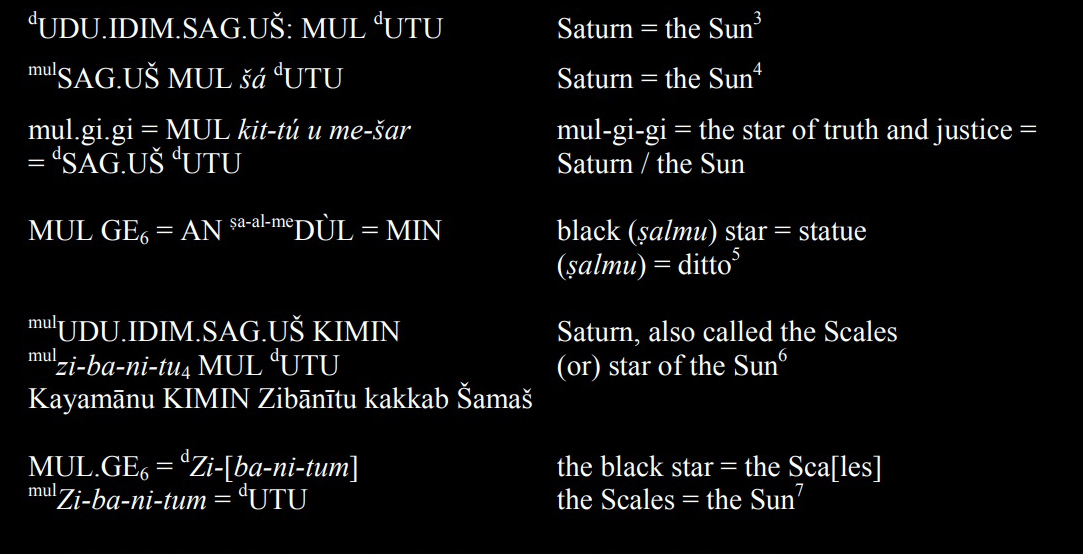
That's why Saturn is considered in Astrology to have it's House there and place of power, though Arcturus was the astral association of En-lil.
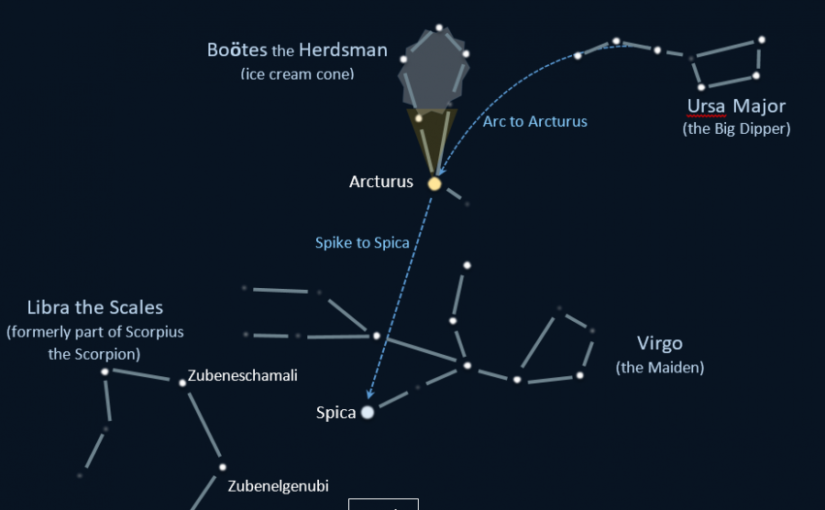
Saturn was related to the Claws of Scorpio/scales of Libra and thus the place of judgement and death and rebirth particularly in the Egyptian understanding of Ma'at.

That's why Saturn is considered in Astrology to have it's House there and place of power, though Arcturus was the astral association of En-lil.

a reply to: Madrusa
Hi Madrusa,
I know the Nazi use of the Swastika is only part of the story, however it was first used in the inaugural meeting of the Starnberg branch of NSDAP, on 20th May 1920, on this day ancient Greek day marker was used being sunset on 19th May 1920 in Starnberg, Germany, where the Sun set along the horizon with, Sirius, Alnilam and the horns of Taurus, i hope you can show this with the horns.
www.answers.com...
I'm aware you are looking back further than Nazi involvement, but is still an important period, graph below:-
files.abovetopsecret.com...
Hi Madrusa,
I know the Nazi use of the Swastika is only part of the story, however it was first used in the inaugural meeting of the Starnberg branch of NSDAP, on 20th May 1920, on this day ancient Greek day marker was used being sunset on 19th May 1920 in Starnberg, Germany, where the Sun set along the horizon with, Sirius, Alnilam and the horns of Taurus, i hope you can show this with the horns.
www.answers.com...
I'm aware you are looking back further than Nazi involvement, but is still an important period, graph below:-
files.abovetopsecret.com...
new topics
-
Official denial
Diseases and Pandemics: 2 hours ago -
MEGA - Let's Make Europe Great Again
Other Current Events: 2 hours ago -
Hamas and Other Islamist Terrorist Groups Announce Support of US Campus Anti-Israel Protests
Education and Media: 3 hours ago -
Psychotronic Operation Rwanda Who Wants To Be A Refugee?
ATS Skunk Works: 3 hours ago -
AI phrenology
Science & Technology: 10 hours ago
top topics
-
4/27/24 New Jersey Earthquake
Fragile Earth: 16 hours ago, 8 flags -
AI phrenology
Science & Technology: 10 hours ago, 4 flags -
Psychotronic Operation Rwanda Who Wants To Be A Refugee?
ATS Skunk Works: 3 hours ago, 3 flags -
Hamas and Other Islamist Terrorist Groups Announce Support of US Campus Anti-Israel Protests
Education and Media: 3 hours ago, 3 flags -
Fun with extreme paints
Interesting Websites: 17 hours ago, 2 flags -
MEGA - Let's Make Europe Great Again
Other Current Events: 2 hours ago, 1 flags -
Official denial
Diseases and Pandemics: 2 hours ago, 0 flags
active topics
-
Canada caught red-handed manipulating live weather data and make it warmer
Fragile Earth • 27 • : Justoneman -
Psychotronic Operation Rwanda Who Wants To Be A Refugee?
ATS Skunk Works • 4 • : stonerwilliam -
Joe Biden Facing Criminal Charges In Ukraine
Mainstream News • 96 • : Justoneman -
What allies does Trump have in the world?
ATS Skunk Works • 7 • : Justoneman -
AI phrenology
Science & Technology • 15 • : Hecate666 -
MEGA - Let's Make Europe Great Again
Other Current Events • 8 • : watchitburn -
Official denial
Diseases and Pandemics • 4 • : Lochid -
-@TH3WH17ERABB17- -Q- ---TIME TO SHOW THE WORLD--- -Part- --44--
Dissecting Disinformation • 714 • : Justoneman -
Killings of Palestinian children are soaring in the West Bank.
World War Three • 163 • : Terpene -
Hamas and Other Islamist Terrorist Groups Announce Support of US Campus Anti-Israel Protests
Education and Media • 5 • : FlyersFan
